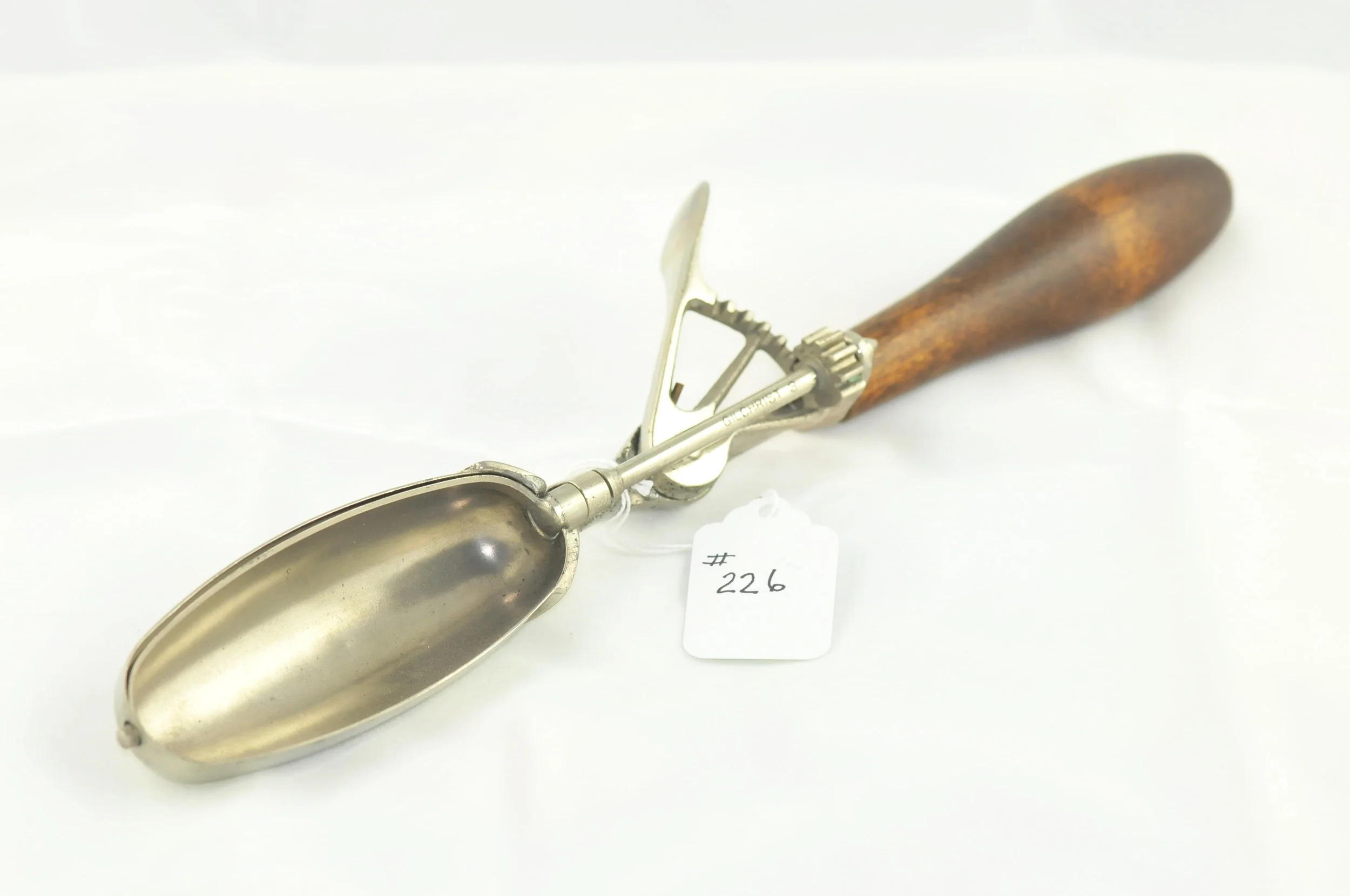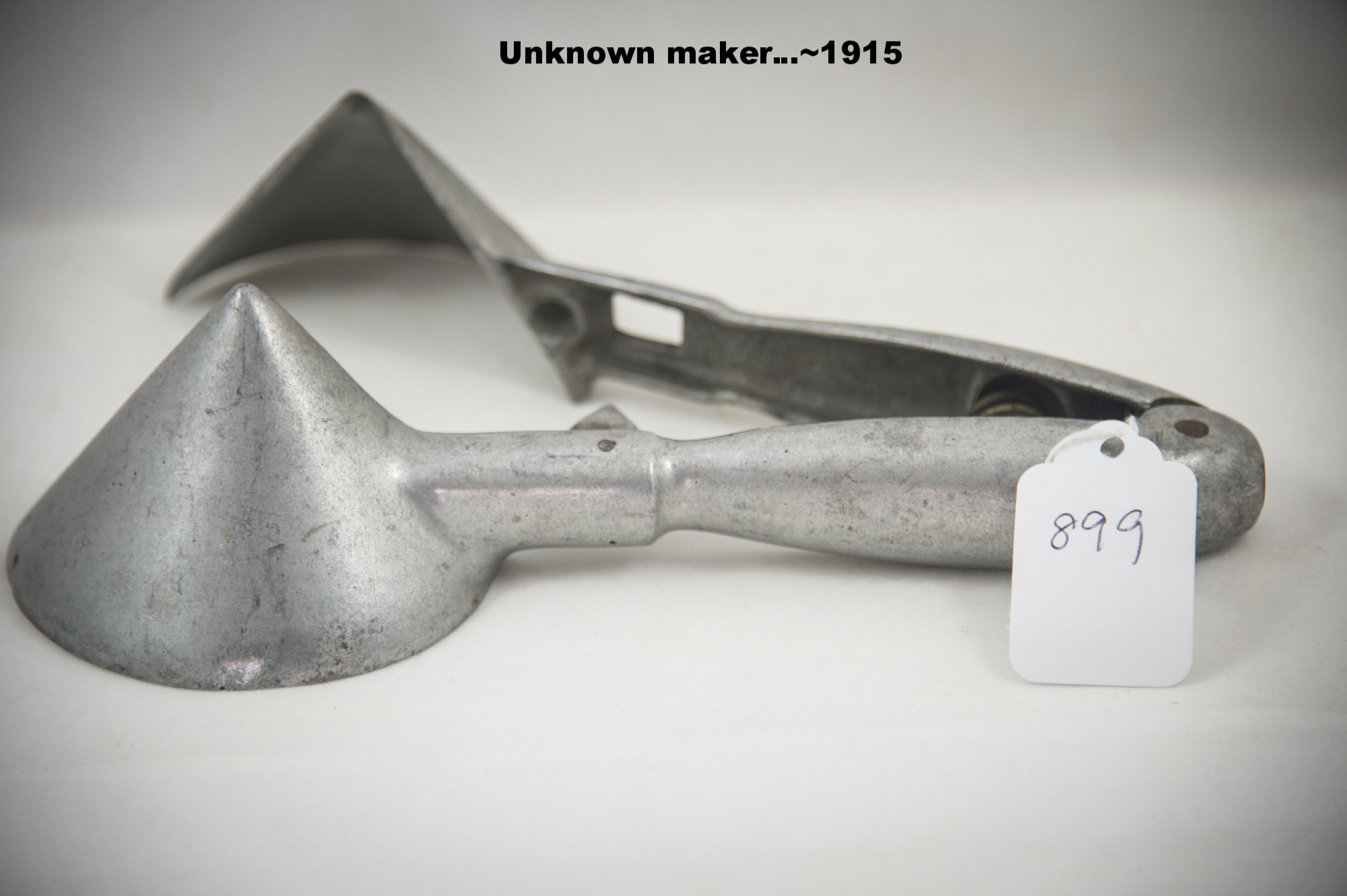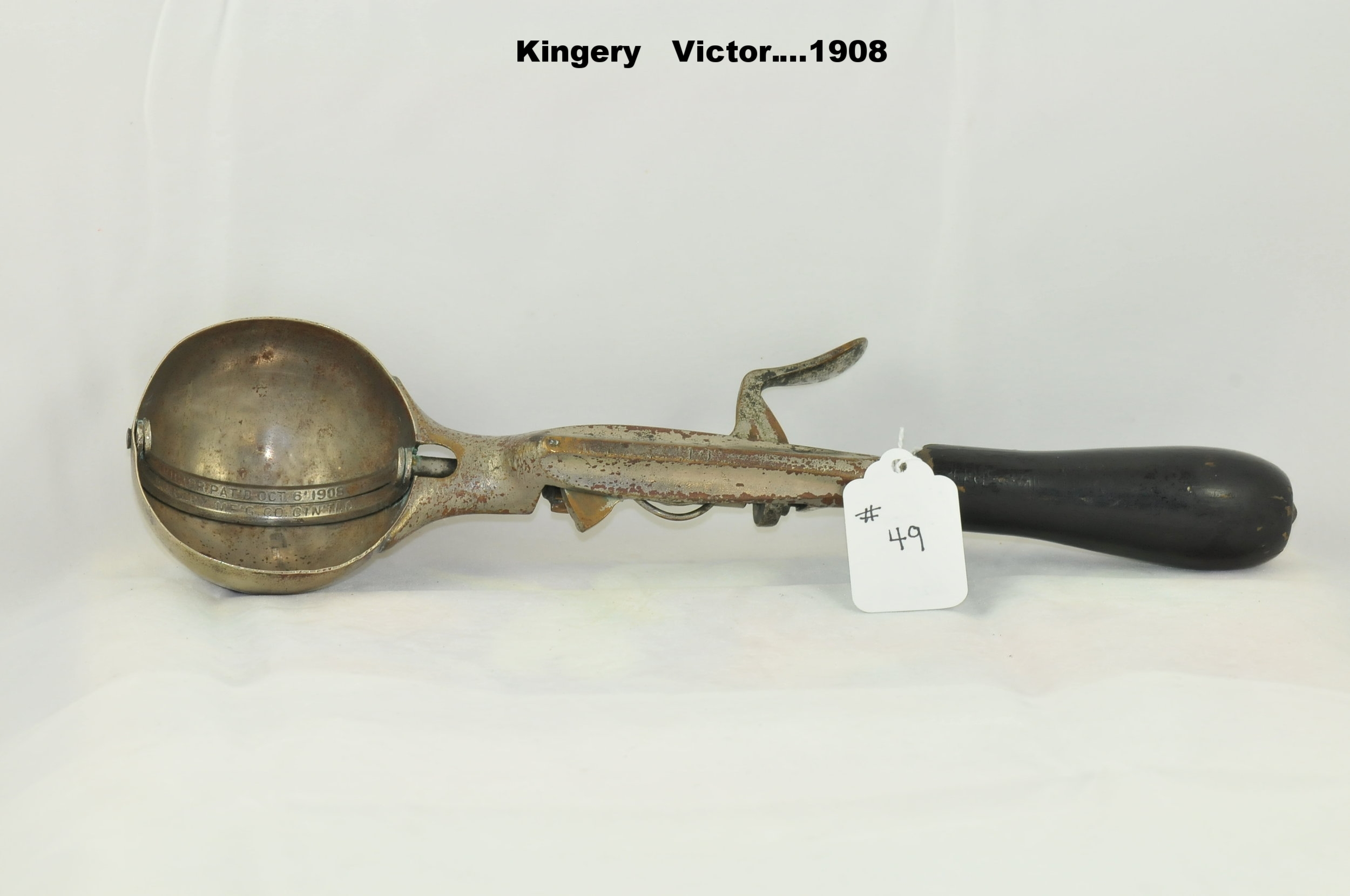Of course, the shape of an ice cream scoop bowl has nothing to do with the quality of the ice cream, but the presentation it affords might add to the pleasure of the experience. The original conical-shaped scoop was the dominant shape available for several years. It was approximately 17 years (1895) after the first scoop patent (1878) before the round bowl shape became a widely accepted rival to the established offerings. There was a round bowl scoop produced on Clewell’s patent (1878). These were the first non-conical-shaped scoops produced for dishing ice cream. My assumption is that these were not well received as few examples can be found. There was a patent for a rectangularly shaped bowl scoop awarded in 1886. I don’t know if these were actually produced. I have not seen an example.
Before I go further let me acknowledge that ice cream was being served long before the first patent for an ice cream scoop. Spoons, kitchen ladles, lard spades, and other apparatus were used without thinking that a special ice cream device was needed. The original scoop inventor William Clewell, aware of ice cream's growing popularity, had the idea of providing a device that would be more practical for the server and produce a more appealing serving for the customer. His idea spawned an entire industry. As with many inventors, Clewell never realized high profits for his efforts. I include non-mechanical devices like spoons, ladles, and spades as a scoop collection category if they were manufactured to serve ice cream.
There were slab-shaped servings meant to be placed between wafers and eaten as a sandwich-type treat. This must have been very well received as the ice cream sandwich designs flourished until you were more likely to purchase your pre-packaged ice cream sandwiches. Ice cream scoops designed for filling cones became very popular and furthered the on-the-go approach to eating ice cream. Ice cream sandwiches and cones were a perfect match for vendors on special occasions both indoors and out.
Tubular-shaped scoops would fill cones or chocolate shells. One scoop of sorts was a hypodermic-looking device that was designed to place a tube of ice cream into a banana half. The most famous of the tubular designs filled a tube-shaped cone that was marketed as a “Cold Dog.”
More likely at a parlor setting, scoops with odd-shaped designs were presented. Banana splits might include boat-shaped ice cream servings to fit the dish's shape better. Servings from the famous heart-shaped scoop could be presented in a special heart-shaped dish.
The 1920s seemed to be the era most associated with novelty scoop designs. The depression was the most likely reason that these designs slowed and gave way to the more utilitarian designs.
Here are some examples of bowl shapes I have found.
Conical Bowls
Round Bowls
Sandwich
Tubular
Novelty
Non-Mechanicals
Please disregard the tag numbers on these scoops. They are only for identifying the items owner.



























































































































